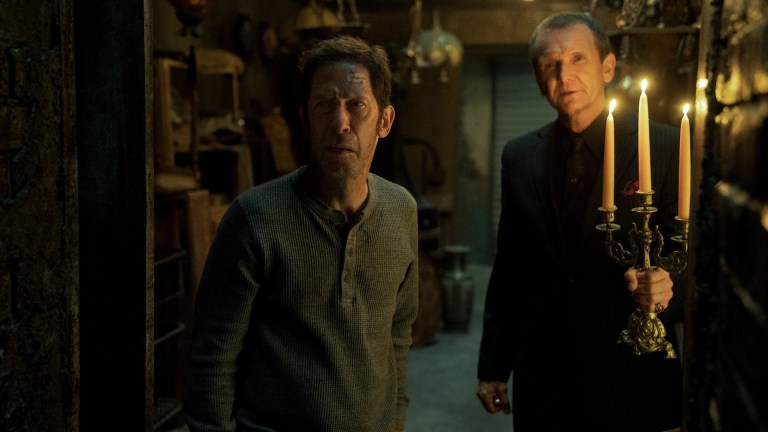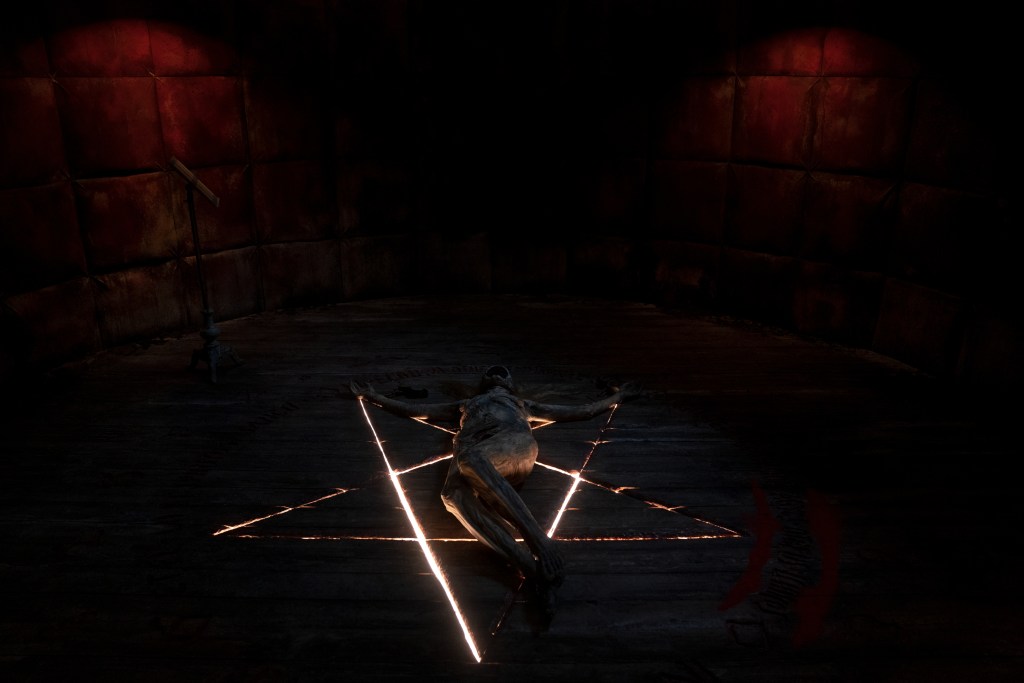Cabinet of Curiosities: The EC Comics Influence of Lot 36
Guillermo del Toro's Cabinet of Curiosities kicks off with a parable about not being awful.

This article contains spoilers for Guillermo del Toro’s Cabinet of Curiosities: “Lot 36.”
Talk to just about anyone involved with Netflix horror anthology series Guillermo del Toro’s Cabinet of Curiosities long enough and EC Comics will eventually come up.
The namesake of the show himself, Academy Award-winning director and monster enthusiast Guillermo del Toro, has freely spoken of his love for the classic mid-20th century comic imprint, telling The Austin Chronicle earlier this year that “I remember when I was a kid being very scared by Graham Ingels of EC Comics.”
From 1944 to 1956, EC Comics (or Entertaining Comics) published hundreds of issues of comics in genres like crime, satire, fantasy, and most importantly: horror. EC’s style was distinctive, inspiring a whole generation of horror storytellers and respectful modern copycat endeavors like Tales from the Crypt (which borrowed its title from EC) and Creepshow. Frequently, EC Comics were known for their shock endings, in which a unsavory character would commit an equally unsavory act only to receive an awesomely righteous punishment for it.
It’s hard not think of those EC Comics endings when viewing the first double feature provided by Guillermo del Toro’s Cabinet of Curiosities. Both “Graveyard Rats” and “Lot 36” (which are bundled together under the heading of “Night One: Scavengers”) feature endings that could be ripped right out of the pages of an EC Comic. Graveyard Rats director Vincenzo Natali was upfront about the inspiration.
“I absolutely feel like the lineage of this film (not necessarily the story because it predates it) is EC Comics and wanting to pay homage to those kinds of stories where a character does something immoral and pays in the most hideous way for their crime,” Natali told Den of Geek.
Natali’s impressions are certainly applicable to Graveyard Rats and Lot 36. The latter, which is technically the first episode on Netflix’s servers, feels particularly indebted to the shock horror of the past. Based on an original story by del Toro, written by Regina Corrado (The Strain), and directed by Guillermo Navarro (Narcos), Lot 36 is set in a beguiling alternative universe where hubris is punished and assholes don’t win. Or at least this asshole doesn’t.
OK, we’re just kidding about the alternate universe thing and expressing surprise that someone bad would ever experience bad things. Lot 36 takes place in our own universe, albeit in the past. It’s sometime during George H.W. Bush presidency and the United States is in the midst of launching the Gulf War. This takes place in the backdrop as Vietnam War veteran Nick Appleton (Tim Blake Nelson) is trying to keep his kneecaps unbroken due to debts he owes by purchasing delinquent storage units at auction. This is about 20 years before Storage Wars, mind you, so Nick is ahead of the curve…only if all the stuff he bought wasn’t useless crap.
As the title promises, Nick uncovers something immense upon purchasing Lot 36. While much of the items therein are the usual nonsensical knick knack there are some intriguing treasures. Nick uncovers a photo album containing photos from Nazi Germany and a seance table that just happens to contain three of the four books that can communicate with the dead. If he can only find the fourth, Liber Quartus Sacramentum, in the unit somewhere, then he will be paid $300K by a genial German man and he will get to pay off all his debts.
Even though Lot 36 is among the shortest installments of this anthology at only around 40 minutes, much of the set up feels unnecessary. The concept of a horror discovered in a storage locker is a novel one and Tim Blake Nelson portrays a depressingly believable depiction of an early ’90s proto white nationalist. But if anyone enters into the Cabinet of Curiosities under the belief that del Toro and friends created it as an excuse to create cool monsters then Lot 36 won’t do much to disabuse them of that notion.
It certainly helps, however, that the monster of Lot 36 is hellishly appealing. It turns out that the former owner of Lot 36 was a Nazi sympathizer concerned with demonic possession. He allowed a demon to enter his beloved sister Dottie and has been keeping her imprisoned within the walls of the unit ever since. Aside from an enigmatic opener in which Lot 36’s old owner croaks while chopping chicken heads, the first time viewers become aware of Dottie’s existence is only minutes before she appears. Once she does though you realize you’ve been waiting your whole life for Dottie.

Possessed by swirling tentacles bursting out of a small desiccated woman, Dottie chases Nick through the hallways of the storage unit center (which are lit via timer, which adds some more tension) culminating in the aforementioned EC Comics ending. Nick reaches a door and is inches from safety only to find it locked. He appeals to the woman, on the other side of the door to let him out but unfortunately for him, she just happens to be the kindly Spanish-speaking woman, Amelia, who Nick was cruel and intolerant to earlier. Oh well – door locked, Dottie fed, racist dead, credits end!
I’ll confess that for an embarrassing long chunk of Lot 36’s running time I somehow expected for Nick to realize the error of his ways, apologize to Amelia, and find redemption and safety in the end. Maybe it’s because Tim Blake Nelson is such an inherently likable actor or maybe it’s because Ted Lasso has made television a friendlier place, but I really though Nick coming into contact with Nazi memorabilia would change him in some way. Like “hey, I’m racist, but I don’t wanna be that racist. Perchance I should change.” That would certainly be the traditional storytelling approach: have a protagonist undergo both a literal and metaphorical journey of discovery. But that’s not the EC approach.
What makes the EC Comic style appealing to creatives like Guillermo del Toro is plainly evident here in Lot 36. EC Comics doesn’t have time for your personal growth. If you’re a dickhead you’re gonna die. There’s a certain elegance there that Lot 36 appreciates and it makes Night One of Guillermo del Toro’s Cabinet of Curiosities a smooth, cathartic ride.
Two episodes of Guillermo del Toro’s Cabinet of Curiosities are available to stream on Netflix now. Two new episodes will be added each day through Friday, Oct. 28.
